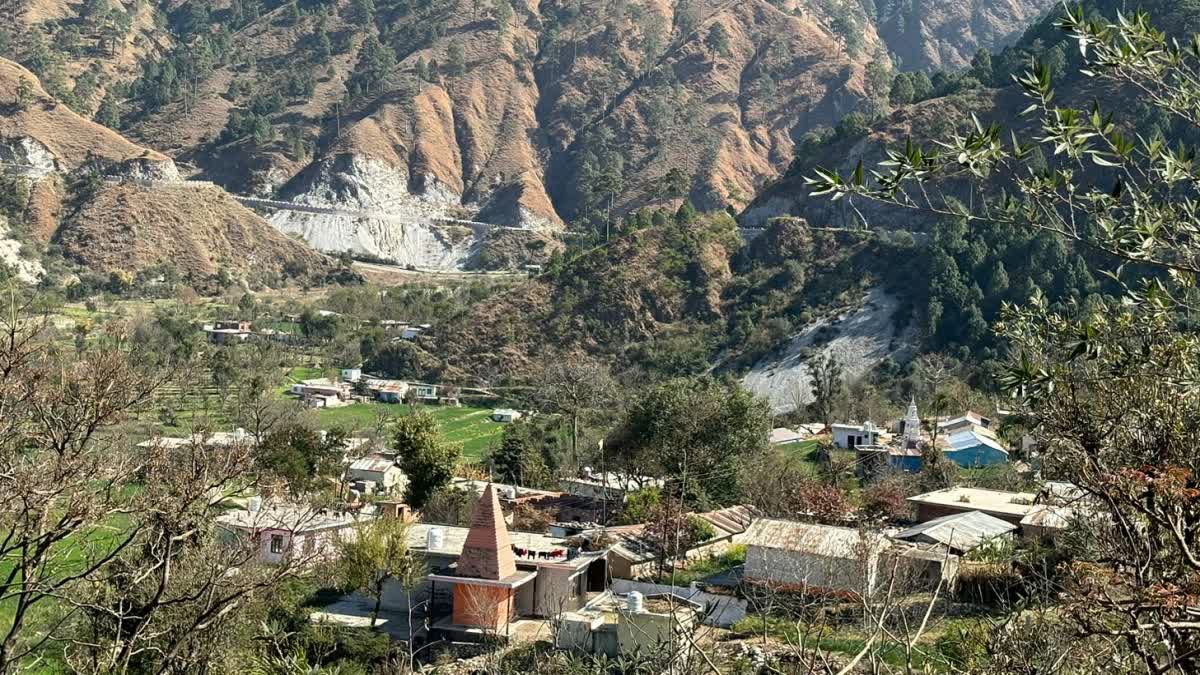By Amir Tantray
Jammu: Etched in history for being the two ends of the world’s highest railway arch bridge over the Chenab River, the villages of Bakkal and Kauri on the banks are examples of neglect and misery. For villagers, the Chenab Railway Bridge is a constant reminder of what's been lost as the future looks bleak for them, forcing them to migrate to other places for a better living.
“We can't even cross the bridge on foot to visit our relatives,” says Amarnath, the former Sarpanch of Sersandwan Panchayat. “This bridge that connects two regions divides our community.”
During the construction and after the completion of the Chenab Rail Bridge, the area had become a tourist attraction, but since the security forces have imposed restrictions on going near the bridge, tourists have faded away, and people are back to the time that was there before the start of construction of the bridge.
“For people from outside, it looks cosy that the names of Bakkal and Kauri villages have got international recognition after the construction of the world's highest railway bridge between the two. But on the ground, we are facing its drawbacks,” Amarnath claims.
The villagers are at the receiving end of the adversity brought by the project. “The surrounding areas are without water after the construction of the bridge and tunnel. All the sources of water have dried up, and the flow of water from the tunnel has been directed towards the Reasi side,” he says.
Loss of Livelihood
According to the former sarpanch, the farm has turned barren, forcing people to migrate to other places for a better living. “Earlier, when the construction had started, our people got jobs in the project, but once the project was over and the construction company left, there was no employment anymore,” he says.
He claims the people hoped to get a livelihood given the tourism potential of the area, but their hopes were short-lived as authorities put restrictions on the movement of civilians. “Tourists were thronging our villages daily, but since the restrictions have been imposed, no one is allowed to move near the bridge, and no one is visiting our area,” he adds.
Sersandwan panchayat is home to around 2500 to 3000 souls with people mostly dependent on agriculture and labour work. The agricultural land is rain-fed, and other natural sources of water have also vanished due to the construction work.
The situation on the other side of the bridge, in Kauri village, which falls in the Kanthan-A panchayat of the Arnas rural block of Reasi district, is no different.
“Our water sources have dried up and unemployment has increased, but we have lost our land without getting any compensation. Several kanals [1 kanal is equal to 0.125 acre] of land have vanished after the construction agency dumped the material they dug out of the tunnel. In return we haven’t got a single penny as compensation from railways,” says Mohan Lal, a local of the Kanthan-A Panchayat area.
“The only benefit we have got over these years is that when the bridge's construction started and we got employment there, concrete houses replaced old muddy houses,” he says.
A former Sarpanch of the Kanthan-B panchayat, Sansar Singh, believes that they don’t have any benefit from the construction as people have lost jobs and have been left to search for other things to earn a livelihood for their families. “We live in hilly areas where generating employment is tough as compared to other areas. Since the company left, our youth will have to return to Reasi or other areas to work to earn a livelihood for their families,” Singh says.
